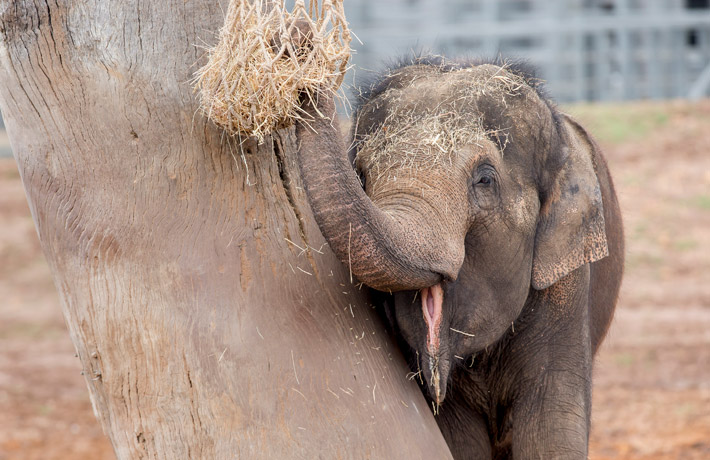Have you 'herd' the news? Our elephants have moved from Taronga Zoo Sydney! Learn more.
Land of a million elephants
Elephants have long been the heartbeat through the forests of Asia. For thousands of years these sacred giants roamed the lands connected to ancient storylines. Being such magnificent and powerful beasts, Asian elephants were widely tamed to move heavy objects, felled trees, carry humans and even to wage war. However, the past century has seen significant changes to Asia’s elephant story as ancient tribal lands and elephant habitat has been converted to agriculture and their numbers have fallen to around 40,000 animals.
Ecological engineers
Elephants play a crucial role in keeping forests strong, resilient and diverse. When elephants eat, they create gaps in the vegetation. These gaps allow new plants to grow and create pathways for other animals in their footprints. Their massive size enables them to reach high hanging fruit and transport seeds across vast distances.
Among the dung
Elephant dung is a nutrient rich environment. With each animal producing around 100kg of poo a day from their forest feasting not all foods are fully digested. Elephants leave dung that is filled with seeds and plant material and when this is deposited while moving through the forest the seeds are sown. Over time these seeds grow into new grasses, bushes and trees boosting the health of the forest ecosystem.
Family ties
Female elephants are social and form herds of related females and immature offspring that are led by the oldest female, the matriarch. Older matriarchs are thought to have greater knowledge of the landscape. It is the task of the eldest elephant to lead the younger herd along ancient seasonal migratory food trails than the younger herd members. Living in multi-generational groups allows young females to learn from the experience of their elders.
Trunk calls
Asian Elephants have much smaller and more rounded ears than their African cousins but that doesn’t make them any less effective. Trumpeting loudly can be heard through the forest by many but elephants can communicate in a low rumble that can be picked up over 9km away, and what’s more, the elephant receiving the call picks it up through its feet!

Come and meet us
You can meet our Asian Elephant herd at Taronga Western Plains Zoo Dubbo.
At Taronga we have made a conservation commitment to the Asian Elephant. Taronga’s successful breeding program, driven by our experts and partner zoos, is a vital part of the international effort for this endangered species.